HT Talks To . . . Robert Rodriguez
Much like the guitar-playing hero of his Mariachi trilogy, Robert Rodriguez is a one-man army—a veteran moviemaker well versed in all of its disciplines. Success born of unending creativity has led to unmatched creative freedom at his own Troublemaker Studios, far from the stodgy bureaucracy of Hollywood. Somehow, he found some time to talk to me about his work, including the ceaselessly stunning Sin City.
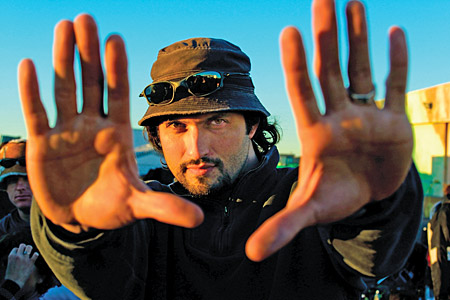
How is it possible for one person to handle so many responsibilities in making a movie?
I guess because I started that way, on El Mariachi. And usually, when you go to film school, everybody does one job, and you learn that. But, on Mariachi, I did all those things and really enjoyed them.
Could you ever choose one?
No, man, because they're all tied together, and you're not doing them all at the same time. The actual production process takes so long that, when you're writing, you're just writing. And sometimes I'm writing music while I'm writing the script, already thinking about how the movie is going to sound, and doing some production-design drawings. And then, when it's time for directing, I'm directing, and I've always operated the camera anyway when I'm shooting. Part of my directing style is to be right there near the actor, operating the camera, so I'm doing the lighting and the camerawork. Since I was there on the set, I know where all the footage is, so it's just more organic for me just to sit there and cut it. While I'm doing that, I'm also writing music.
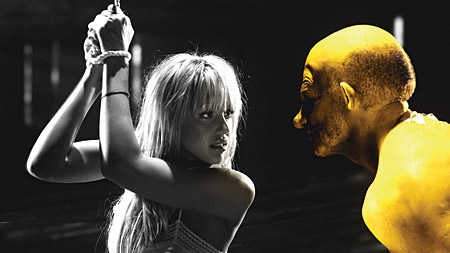
Do you ever sleep?
No, that's the one drawback! [big laugh] I sleep during the day, actually. That's one of the big secrets, is I work at night. I get so much done at night, because there's no distractions.
You assemble your own DVD extras, too?
I put those together myself. When people come over to the house, I take them into my edit room, and I show them a little behind-the-scenes stuff. I want it to feel like that. I work at home, and so my editing setup is there in the garage, and so is my mix stage. It's like having a home studio.
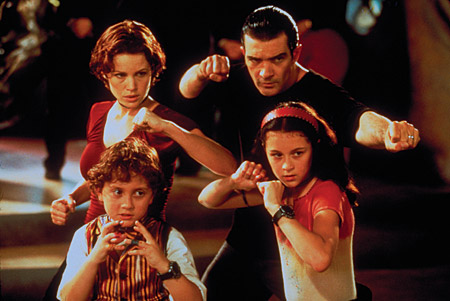
As an established auteur, is it odd to undertake an adaptation of someone else's work?
I like jumping back and forth between doing things that I completely originate on my own, like the Mariachi movies or the Spy Kids series, and then doing other people's scripts. Like I did From Dusk Till Dawn, which was Quentin Tarantino's script, The Faculty, which was a Kevin Williamson script, and then Sin City. I thought, "Wow, I can actually add something to this. I can bring this to life in a way that I don't think anyone's figured out how to do yet."
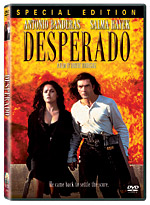 When did you first discover Sin City?
When did you first discover Sin City?
I had been reading it since 1992. After I finished Spy Kids 3-D and Once Upon a Time in Mexico, I looked at it again, having learned so much about effects and lighting and thought, "Oh my God, I can make this now!"
How in God's name did you ever cast Marv in Sin City? He's a force of nature.
I remember I was talking about the movie with Sylvester Stallone, and I said, "Hey, you'd make a great Marv!" And he said, [impersonates Stallone] "I remember that character!" I started reading the book, and, just as I started reading it, I thought, "Oh, wait a minute; I know who this is. This is Mickey Rourke!"
On set, was it tough sharing the reins with Frank Miller?
Not at all. I thought, if he didn't mind hanging around, he should just be there the whole time. That way, I'd have the only guy who's ever been to Sin City right there on the set! And I knew the actors would love that, because he'd be able to tell them things about the characters that aren't even in the books.
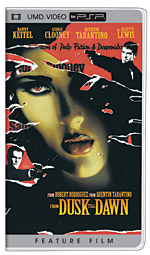 Did you each have your own chair, you and Miller?
Did you each have your own chair, you and Miller?
Oh yeah, everybody has their own chairs! Except my chair's usually behind the camera. Frank would usually be behind the monitor, watching everything, so I would know when I got the shot, and the actor could tell. Then we'd go over to see, "Does Frank like it?" Frank would walk out from behind the monitor with this big, goofy smile on his face, and we'd know.
In preproduction, how do you decide what to build and what to add later, in post?
Everything was added later, actually, in order to give it that look and that particular lighting you have to use in black-and-white. You can't separate objects by color like your eye does. It has to be all by shape and by lighting. All black-and-white movies really are more gray-and-white. They're washed out a lot, because you can't get the really stark black-and-white from every object. But you can if you do it in CG like that.
And then how much of your time was spent helping the actors to visualize what their scenes would ultimately look like?
We would spend more time just looking at the book and going, "This is where you are here, you're in the middle of the street, you're in an alley," and they would put themselves there. It's almost like being in theater, where you've got minimal props and you have to imagine the rest. In the whole scene Quentin did with Benicio Del Toro and Clive Owen in the car, there's no car there—it's just a steering wheel. I put the car in later, and you can't tell.
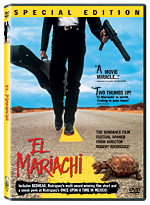 Why that Specific scene for Tarantino, anyway?
Why that Specific scene for Tarantino, anyway?
That one seemed like a self-contained little short film, in a way. And he'd be able to work with two really cool actors at the same time. And he was available for that episode. Had it been the previous episode—because he had to go be the jury president at Cannes—it was probably going to be the opening sequence of the Bruce Willis one.
Looking at the cast of Sin City and back over your previous films, you seem to have a very loyal group of actors who come back.
Yeah, there's a great freedom to being outside of the Hollywood system—it's really just about the work. People come down here, and it's just creative playtime. They don't have a bunch of studio heads down there all giving their notes. And word like that spreads around, and people hear about that.
That sounds awesome. What's your address?
Austin, Texas. Just come down, right there: Troublemaker Studios. As soon as you leave the airport, you see the big sign. [laughs]
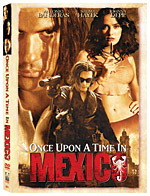 Why is digital moviemaking so important to you?
Why is digital moviemaking so important to you?
I just worked with film for so long, and, by the time you deal with effects and having to do opticals—it's just such a pain in the butt. Digital was an answer to all those things. And the best things about it, especially because I'm doing my own lighting: You can see the full-resolution image while you're on the set. You can't do that with film. You're working in a visual medium, yet you can't see what you're doing when you're shooting film. It's like painting with the lights off.
Sure, the technology's gotten so good, why not go digital?
The Pixar guys would say, "Technology pushes art, and art pushes technology." And when you use the technology, it opens up so much more creative avenues. A lot of people really understood what I was talking about when they finally saw Sin City, because they couldn't have made that movie on film.

























































